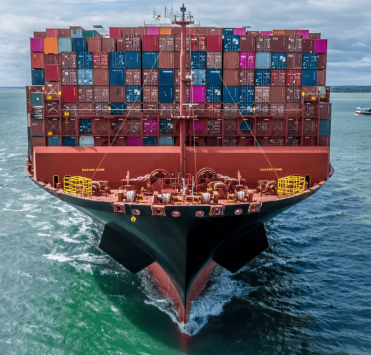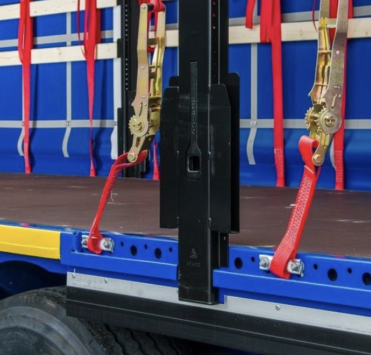Unloading of tank trucks. Necessary equipment. Safety rules

Methods for unloading liquid Bulk cargo
Unloading liquid Bulk cargo by gravity. A method that uses the tank truck's own gravitational flow to facilitate the unloading of liquid Bulk cargo. This method largely depends on the design of the tank trucks and the location of its drain holes. The principle of gravity unloading is simple: if you place the tank truck at a higher level than the receiving container, the liquid Bulk cargo naturally flows downwards under the influence of gravity. This method is particularly advantageous because it requires minimal mechanical intervention, reducing the risk of equipment failure and associated costs. In addition, gravity unloading is inherently safer for personnel as it minimizes direct contact with the cargo, which is consistent with the need to ensure the safety of equipment and personnel during unloading operations.
Unloading cargo using a pump. A method that involves the use of external pumps to facilitate the process of unloading liquid Bulk cargo from a tank truck. This method is versatile and can be adapted to different types of liquid Bulk cargo, from water to more viscous substances. External pumps, such as centrifugal pumps or positive displacement pumps, are connected to the tank truck outlets. The choice of pump is important and depends on the nature of the liquid Bulk cargo and the required unloading speed and efficiency. The pumping method allows for controlled unloading, providing precise control of the cargo flow rate. This method significantly improves operational efficiency and safety by reducing the need for manual handling and minimizing personnel exposure to potentially hazardous materials.
Unloading using air pressure. Air pressure systems (compressor) use compressed air to expel liquid Bulk cargo from a tank truck. This method involves creating pressure in the space above the liquid cargo inside the tank truck, causing the liquid to be pushed out through the drain holes. The compressor is especially useful for unloading viscous liquids or liquids that are difficult to unload by gravity. The key advantages of this method include the ability to completely unload the tank truck, eliminating any remaining cargo in the tank. Additionally, because the system is closed and pressurized, it minimizes load exposure to personnel, increasing safety. Using compressed air for unloading also allows for greater control over unloading speed and reduces the risk of contamination, making it the preferred method for handling sensitive or hazardous liquids.

Necessary equipment for unloading liquid Bulk cargo
When unloading liquid cargo from a tank truck, selecting the correct hoses and connections is essential to ensure a safe and efficient unloading process. Hoses used in this context come in a variety of types and specifications, each designed to carry different liquid loads. For example, chemical-resistant hoses are needed when handling corrosive liquids, while food grade hoses are used for consumables to prevent contamination. The characteristics of these hoses, including their material, diameter, length and pressure rating, must be carefully matched to the load properties and unloading conditions to minimize the risk of leaks, ruptures and exposure to hazardous substances.
A variety of liquid Bulk cargoes, from crude oil to chemicals, require a wide range of pumps to efficiently and safely unload from a tank truck. Each type of liquid cargo has special handling requirements that influence the choice of pump. For example, positive displacement pumps are often preferred for viscous fluids or fluids containing solids because they can maintain a constant flow rate despite varying pressures. On the other hand, centrifugal pumps are preferred due to their efficiency in pumping large volumes of less viscous liquids at relatively low pressures. The selection process also considers factors such as pump compatibility with fluid chemistry, pump performance, pressure requirements and energy efficiency. Using the right type of pump not only optimizes the unloading process, but also significantly reduces the risk of accidents and harm to the environment.
For operators involved in unloading liquid cargo from tank trucks, wearing appropriate protective equipment is non-negotiable. The nature of liquid cargo, especially when classified as high-risk or dangerous, poses various risks to the health and safety of personnel. Personal protective equipment (PPE) serves as the first line of defense against potential exposure to hazardous substances, physical injury, and environmental elements. The main PPE for this operation includes:
- Chemical resistant gloves and clothing to prevent skin contact with hazardous substances.
- Safety glasses or face shields to protect against splashes and fumes.
- Respiratory protection in environments where toxic fumes may be present.
- Steel toe boots to protect feet from injury from heavy equipment or falling objects.
Following safety protocols and wearing the correct PPE not only ensures the well-being of operators, but also meets health and safety standards, thereby minimizing the risk of accidents and potential legal liability.
Safety rules for unloading
Grounding. One of the most important safety aspects when unloading liquid Bulk cargo from a tank truck is following grounding and bonding procedures to prevent static electricity and sparks. Static electricity is a well-known hazard when handling flammable liquids, as it can cause a fire if not handled correctly. This risk is especially high due to the separation and charge accumulation that can occur during the transfer of liquids, as well as the possibility of static electricity discharge if grounding and bonding are not performed correctly. To reduce these risks, specific procedures for grounding and connecting equipment are required before unloading operations begin. These safety measures are designed to provide a safe path for static electricity to dissipate to the ground, preventing the buildup of electrical charges on the tank and equipment used for unloading.

Preventing leaks. Preventing leaks during liquid Bulk cargo unloading is another important safety issue, requiring regular inspection and maintenance of equipment used in the process. The integrity of hoses, valves and pumps is paramount to preventing fluid from leaking into the environment, creating contamination risks and safety hazards such as slippage or fire. Regular inspection and maintenance of unloading equipment is necessary to identify and correct any wear or damage that could lead to leaks. As a safety precaution, all equipment must be checked for proper function and structural integrity before commencing the unloading process.
In the event of an accidental spill or leak during the unloading process, emergency measures must be taken immediately to mitigate the impact and prevent further hazards. These procedures include immediate actions such as stopping the unloading process, isolating the source of the leak, and taking spill containment measures to prevent the spread of liquid. In addition, personnel should be trained in the effective use of emergency response equipment, such as spill response kits and fire extinguishers. Precautionary measures recommend a set of actions to be taken in the event of a cargo hose rupture or any spill, ensuring that all personnel are prepared to respond quickly and effectively to contain and manage the incident.









